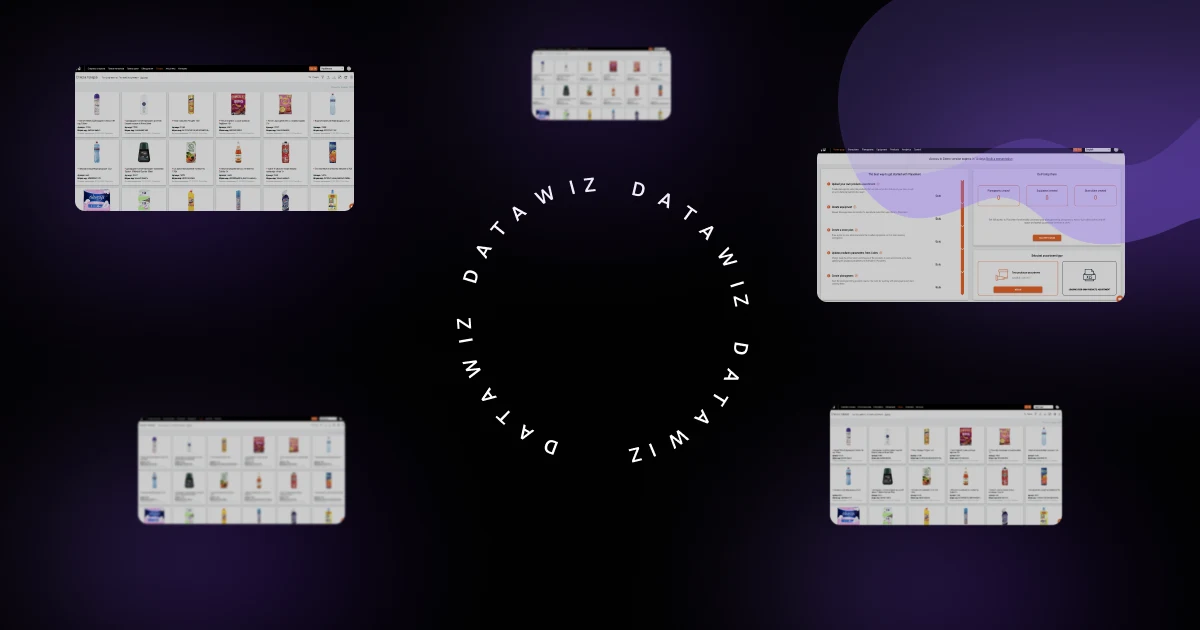Key Performance Indicators (KPI) in Retail: What do They Inform Different Specialists About?
Key performance indicators (KPIs) are visual indicators of productivity.
Work in retail is directly connected with risks and the need to make timely and right decisions. Key performance indicators (KPIs) play a special role in this process. They allow you to:
- understand the real state of affairs in the chain through the study of KPIs;
- identify problems on time and minimize negative consequences;
- make informed decisions that not only avoid losses, but also achieve their goals.
To keep their "finger on the pulse", retail executives should define KPIs, which indicate the "health" of the business.

Types and classification of KPIs
Companies use various key performance indicators (KPIs) to assess their performance, which can be classified according to several criteria. The choice of specific KPIs depends on the strategic goals of the business and the level of management.
1. Classification by management level
StrategicKPIs - help to assess the achievement of the company's long-term goals, such as market share growth, profit increase, or brand development. They reflect global results for a certain period, such as annual revenue.
OperationalKPIs measure the effectiveness of short-term tasks and processes. These can be monthly sales figures, order fulfillment rates, or employee productivity.
2. Classification by functional areas
FinancialKPIs - analyze the company's revenue, profitability, profitability, and other economic indicators.
MarketingKPIs - evaluate the effectiveness of advertising campaigns, conversion, customer acquisition, and the cost of customer activation.
ProductionKPIs - measure the productivity of production processes, the level of rejects, and the efficiency of resource use.
HRKPIs - reflect the level of staff engagement, staff turnover, and the effectiveness of recruitment strategies.
What are the retail KPI metrics?
Each role in retail uses a different list of business performance indicators, but among them, you can identify common metrics with their informational value:
- Turnover.It is the main KPI indicator and measure of success. The majority of international retailer ratings are based on turnover because it indicates the scale of the entire business. In addition, turnover is used to calculate a lot of coefficients: turnover ratio, profitability, and investment attractiveness.
For the owner of the chain, turnover will indicate the amount of investment return and the effectiveness of the done work (advertising, promotions, staff efficiency).
The store manager can use it to assess the success of their store and understand if the assortment of chosen goods is proper and how effectively the staff works in the store.
For the category manager (CM), the turnover metric will be interested in the context of managed categories. It will show to what extent goods in controlled categories are in demand among customers.
The marketer can analyze the effectiveness of promotions by evaluating the turnover of a promotional event.
Qty of sales. It is the quantitative equivalent of Turnover. This performance indicator allows you to exclude the price factor and assess the real situation in sales. It is also used in calculations of a lot of coefficients and metrics.
With its help, the owner of a chain and the store manager receives necessary information not only for sales management but also for goods delivery processes. Since it indicates how many goods "left" the shelves of the chain/store as a result of sales and how many need to be ordered.
For the CM, this metric will show which products in managed categories are in high demand, and which are in the category of unsaleable products.
The marketer can use the qty of sales metric to understand how much the promotion has interested buyers, i.e. how many promotional products have found their consumers.
- Profit.In simple words, it is the part of the revenue that remains after the payment of expenses, or - the value of the realized markup.
The owner of a chain evaluates the fees for its risks and the possibility of scaling the business.
The store manager understands how efficient the store operation was and how much of the cost of the business activity was covered by the goods revenue.
For the CM, profit by category will be an indication of an optimal assortment, competently chosen suppliers, and pricing policy.
- Qty of checksis one of the KPI metrics of store sales, which indicates customer activity and engagement, as it shows the number of customer purchases.
For the owner of a chain and store manager, this performance metric will indicate the popularity of the chain/store and the terminal traffic.
The CM can use this retail metric to understand how many customers chose their categories.
The marketer - for how many customers the promotions were interesting and how they influenced the customer's basket.
Average checkis an essential business performance metric that allows you to understand the value of each average store/chair customer.
For the chain owner and store manager, it indicates how many monetary units a customer leaves the chain/store on average during one purchase.
The CM and the marketer use the average check to find out how much the average customer spends money on one purchase of a particular category or promotional item.

How can you analyze a store's KPI metrics?
Conducting a detailed and comprehensive analysis of the specified sales key performance indicators is not always possible, nor it is necessary. To control the current state of affairs and identify problems on time, it is sufficient to conduct an express diagnosis of the KPIs, which includes:
- monitoring the actual values of indicators for different time intervals (day, week, month, quarter);
- dynamics analysis - absolute and percentage changes from the previous periods
- assessment of the completion of plans and determining the expected completion with current sales trends.
To perform these analytical activities quickly and accurately, we recommend using the Reports of the Datawiz BES analytics platform for retailers.

Relationship between KPIs in a store
By comparing the KPIs against each other, you can easily find problem areas:
- Turnover and Qty of sales. Turnover is the result of the interaction of two factors: price and quantity of sales. Comparing the indicators of growth (decrease) of turnover and quantity of sales, it is possible to understand due to what the revenue grew.
Example: If Turnover increased by 10% while Qty of Sales increased by 3.5%, this case would indicate that revenue increased mainly due to Price increases. Price influenced the increase in Turnover by 6.3% (1.10 : 1.035). That is, the price increase, rather than customer activation, led to a turnover increase.
- Average Check and Qty of Checks. The comparison of the indicators shows how the activity and value of the chain customers changes.
Example: The Qty of checks increased by 0.8% and the Average check increased by 5.2%. This case indicates that while the number of visits with successful purchases changed slightly, the value of each customer to the chain increased significantly.
- Turnover and Profit. Comparing the percentage changes of these key performance indicators allows you to figure out which products are sold in the chain.
Example: The Turnover increased by 10% and the Profit increased by 15.4%. This case indicates a demand increase for more marginal goods.
Conclusion
It is important to remember that every store is unique, and it is difficult to find a universal key to its success. But if you regularly evaluate the statistics of the basic key performance indicators, you can not only assess the results but also prevent failures and losses in your business on time.
 What's new?
What's new?





 No credit card required
No credit card required